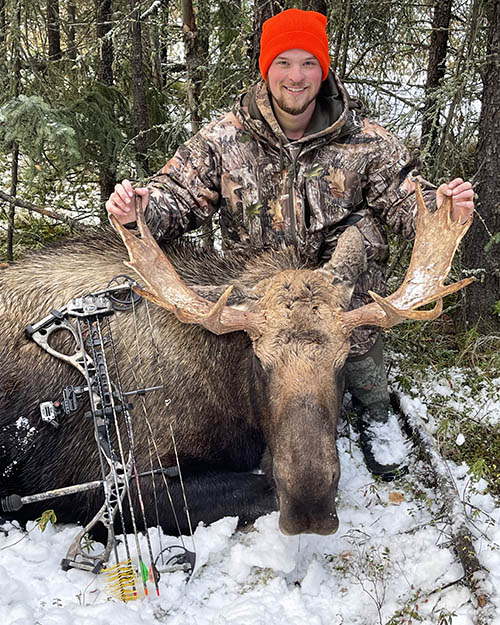Understanding spatial dynamics and stock structure of Pacific halibut (Hippoglossus stenolepis) in the northern Bering Sea
Following the attainment of his degree, Austin will pursue a career in fisheries management, where he can combine his interests of biology and mathematics to estimate abundance and set quotas for commercially important species. In this way, Austin hopes to conserve marine species for generations to come.
- Satellite telemetry
- Acoustic telemetry
- Mark recapture
- Movement modelling
For his dissertation, Austin will investigate the stock structure and spatial dynamics of the Pacific halibut (Hippoglossus stenolepis) in the Northern Bering Sea. Currently there is a knowledge gap in what is known in the northern reaches of the species' range, and as a commercially valuable fish species, informed management is essential. As a result, this research will assess the movements, habitat usage, and spawning behavior of Pacific halibut in the Northern Bering Sea. These findings will be used to assess the current management structure within the region, as well as to generate alternative management strategies to be evaluated in a Management Strategy Evaluation.
Austin Flanigan is a first-year fisheries master’s student at UAF. He was born and raised in Maine, where he gained an appreciation and love for marine and aquatic species. He attended the University of New England (Biddeford, Maine), where he graduated in 2019 with a BS in both Marine Biology and Applied Mathematics; Austin also graduated with honors, where his honors thesis focused on estimating the number of Atlantic sturgeon that utilize the Saco River Estuary on a yearly basis. For his master’s thesis, he will investigate the stock structure and spatial dynamics of the Pacific halibut (Hippoglossus stenolepis) in the northern Bering Sea. Pacific halibut are a commercially valuable fish species, and currently there is a knowledge gap in what is known as the IPHC (International Pacific Halibut Commission) 4E management zone. As a result, studies are needed in order to properly set future catch quotas and to understand the population connectivity of the northern Bering Sea halibut stock.
Following the attainment of his degree, Austin will pursue a career in fisheries management, where he can combine his interests of biology and mathematics to estimate abundance and set quotas for commercially important species. In this way, Austin hopes to conserve marine species for generations to come.



